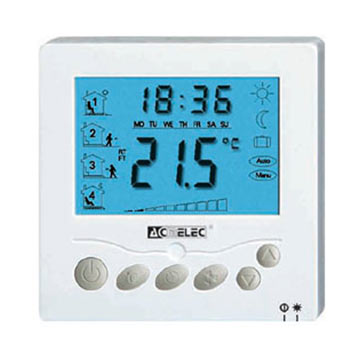
After the long winter, being too zealous about starting up the AC can actually lead to AC problems. Let me let you in on a secret, as a 5-year
Denver HVAC mechanic: Refrigerant is not needed unless there is already serious damage to the central heating system. I get called to recharge refrigerators and air conditioning units every spring, but in reality, the
refrigerant is in a closed loop and cannot leak unless there is damage to system components. Modern air conditioning appliances should not require maintenance. Regular checking and filling of refrigerant increases the likelihood of refrigerant contamination and therefore further damage down the line.
So one thing the average consumer can do before calling an expensive
Denver HVAC service company is to start up the central air unit themselves, checking for any problems. This will outline air conditioner startup and common warning signs that you have a faulty AC part.
First turn off the breakers to both the furnace and central air unit. They should be on separate breakers. For safety, before disassembling or servicing any type of machine that is plugged in, turn the power off.
Remove the cover of the furnace or compressor and vacuum the whole area, making especially sure that there are not foreign parts in the fan blades. Then replace a filter with the same one your
Denver HVAC technician. Spin the fan with your hand and listen for any cracks or rumbling which may indicate a failed bearing. If you can correctly identify the problem, it can make it much cheaper for a
furnace repair company to fix it. Oil the motor and compressor bearings if they have an oil port.
Bearing problems are cheap and easier to fix than replacing an entire compressor.
With the power still off, clean dust and debris from the outdoor unit's electric wiring. Then spray household cleaner on the coil and rinse it off with a hose. Coils are fragile, but will not work properly if clogged with foreign material.
The compressor in the outside unit is very similar to the furnace blower. Check the outside unit fan the same way, checking for cracks or gaps in the fan and fan housing. Then oil the motor and then you are finished with the outside unit.
Then turn back on the power on a warm day to test the system's pressure. Listen for strange sounds then let the system run for a while.
Then check all the air vents in your home. Air vents should be open to let the system to run ventilation at rated pressure.
Many closed vents may increase pressure in the open ones, but this is bad for the
air conditioner. Sometimes cooling problems are a result of the return vent and not the ac vents.
Next is a visual check of the outside unit. The unit should blow warm air and have two lines coming out of it. The small line should be warm or room temperature and the large one should be cool. If you have a outside thermometer you can check the temperature differential between the intake air and the air blown out of the furnace. The temperature difference on a well maintained
Denver air conditioning unit should be around 15 degrees Fahrenheit.








